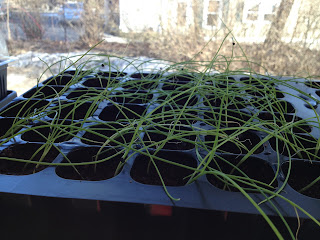Happy Easter!

Most of our Easter weekend was celebrated out in the garden, digging and planting and enjoying the first warm, sunny weekend of the spring. I'll share more on our progress later, but today I wanted to show off the ways in which our chickens contributed to the day: We saved a dozen of our cleanest eggs for Easter egg painting. This wasn't easy over the last couple weeks, as our chickens have been out working , scratching up the dirt in our garden beds to prepare them for planting. Kirk and I leave for work earlier than the chickens are accustomed to laying, so that often means they end up laying their morning eggs in the dirt. It's not typically a problem, unless you want really pretty eggs (which, of course, we did). The eggs above are the ones I painted. I used a white paint pen. That's not an approved food-safe method, I'm sure, but I only used an itty bit, and I lived to tell the tale, after noshing on these: Because really, the only appropr...











